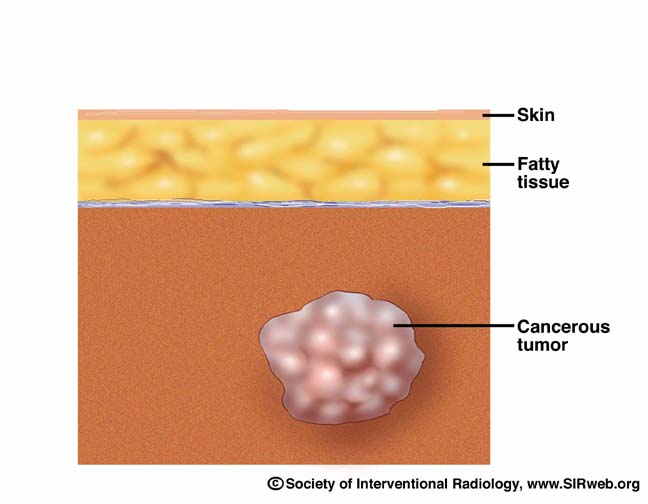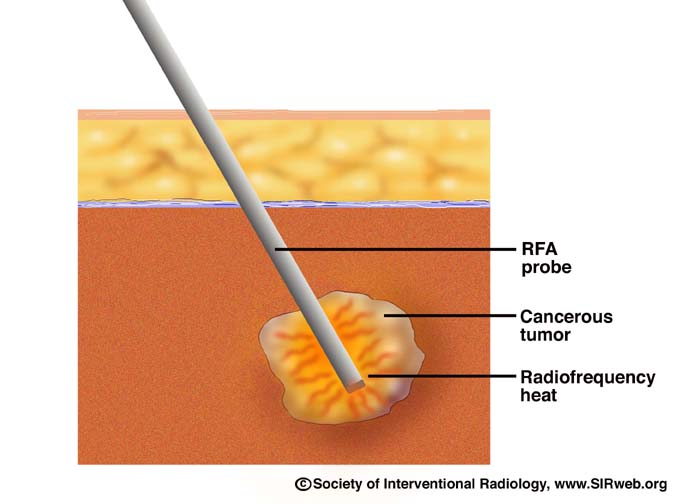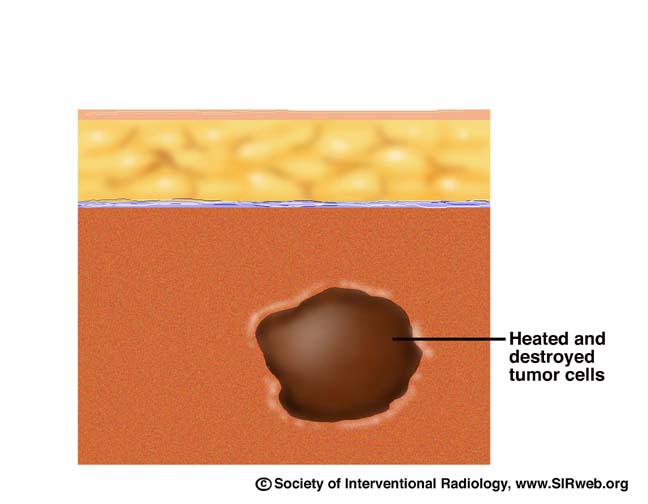Radiofrequency Ablation - Lung
Radiofrequency ablation (RFA) offers a nonsurgical, localized treatment that kills the tumor cells with heat, while sparing nearby healthy lung tissue. Thus, this treatment is much easier on the patient than systemic therapy. Radiofrequency energy can be given without affecting the patient's overall health and most people can resume their usual activities in a few days. It is a safe, minimally invasive tool for local pulmonary tumor control with negligible mortality, little morbidity, short hospital stay, and positive gain in quality of life.
In this procedure, the interventional radiologist guides a small needle through the skin into the tumor. From the tip of the needle, radiofrequency energy (similar to microwaves) is transmitted to the tip of the needle, where it produces heat in the tissues. The dead tumor tissue shrinks and slowly forms a scar. It is ideal for nonsurgical candidates and those with smaller tumors. The FDA has approved RFA for the treatment of tumors in soft tissue that includes the lung.
Efficacy
Depending on the size of the tumor, RFA can shrink or kill the tumor. Because it is a local treatment that does not harm much healthy tissue, the treatment can be repeated as often as needed to keep patients comfortable. It is a relatively safe procedure, with low complication rates.
By decreasing the size of a large mass, or treating new tumors in the lung as they arise, the pain and other debilitating symptoms caused by the tumors are often relieved. While the tumors themselves may not be painful, when they press against nerves or interfere with vital organs, they can cause pain. RFA is effective for small to medium-sized tumors and emerging new technologies should allow the treatment of larger cancers in the future. RFA is a new treatment that has shown early, promising results, but long-term studies have not yet been completed.
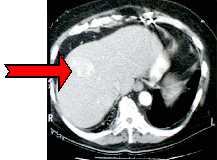
BEFORE
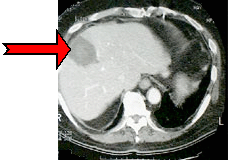
AFTER
A LIVER TUMOR TREATED WITH RFA
Dead tissue appears larger and darker than the living tumor. Over time, the tumor shrinks as the body absorbs and excretes dead cells
Benefits
- Is most effective when all the cancer is localized in the lung
- Can be used to treat primary lung cancer and tumors that have metastasized (spread) from other areas in the body to the lung
- Usually does not require general anesthesia
- Relatively low cost
- Is well tolerated. Most patients can resume their normal routine the next day and may feel tired for a few days.
- It can be repeated if necessary
- It may be combined with other treatment options
- It can relieve pain and suffering for many cancer patients
- It has a short hospital stay
- It has few complications
Conditions treated include cancer of the Lung.


